Why Is Jacksons Pollocks Autumn Rhythm an Example of Nonrepresational Art
Title: Fall Rhythm (Number xxx)
Author:Jackson Pollock (Cody, Wyoming, Us, January 28, 1912 – Springs, New York, U.s., August 11, 1956)
Appointment:1950
Genre:Abstruse art
Movement: Abstract expressionism, activity painting
Technique:Enamel on canvas
Support: Canvas
Dimension:105 × 207 in. (266.7 × 525.eight cm)
Location:The Metropolitan Museum of Art, New York
In New York, one game-changer painting volition make you forget all the things you know about the art! It was undoubtedly born from its painter'south demand.
He desired a new way, a new language, to limited himself. And then, starting time, he spread the sail on the flooring. And then, when he flicked, poured, splattered shot, dropped, splashed, and threw the paint at his sheet in every possible style, it seemed like his painting did not need brushstrokes to become existent. In the meantime, he danced around the canvas by embracing the activity painting, which is a disquisitional part of his fine art. And eventually, he establish his own expression along the manner, inventing the first truly American art move, Abstract Expressionism.
The painting below is none other than Jackson Pollock'south Autumn Rhythm (Number 30), hanging on the Metropolitan Museum of Art walls!

The game-changer painting mirrors the painter's movements and vibrancy as he whirled and ran around the sheet, spilling, dripping, splattering, and swirling pigment. And so, is the painting the map of his trip the light fantastic toe around the sail, or is it an prototype result from the painter's unconscious? Where do yous stand on this? Let me know in the comments.
The brush flicking, the paint flying, and Pollock'south actions merge into a single unit of measurement, an extended harmony.
Let's divulge all the essential and compelling details of Jackson Pollock's Autumn Rhythm (Number thirty), waiting for us in NYC!
THE Concrete ENGAGEMENT OF Autumn RHYTHM
And so, are you having a good solar day? Got anything planned for this afternoon? If not, come up and bring together u.s.a.; nosotros are about to start our footling trip to the Big Apple. We are bang-up to see what we have to see!
As we hurried on our way to get to the Metropolitan Museum of Fine art, we found ourselves thinking almost what makes great art great. And then, we entered the ornate room, filled with fine art pieces that could answer this question.
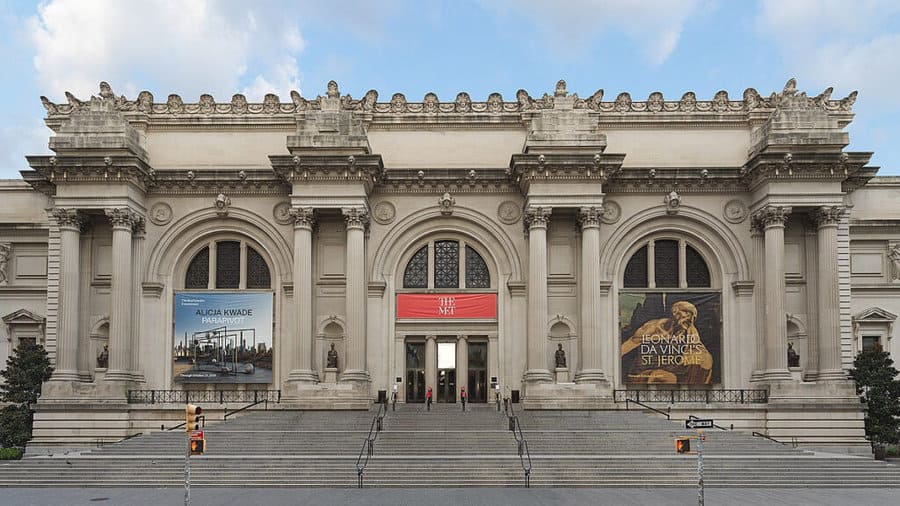
We were just mesmerized by the paintings that came out of Jackson Pollock's hands. Then, one calls u.s.a. to come closer. We are invigorated by our walk to the painting. And there it is! Before our very eyes, the Autumn Rhythm(Number 30), a record of its process of coming into being, a session of buoyant, heavy, elegant, swirling, pooling strings of colour!
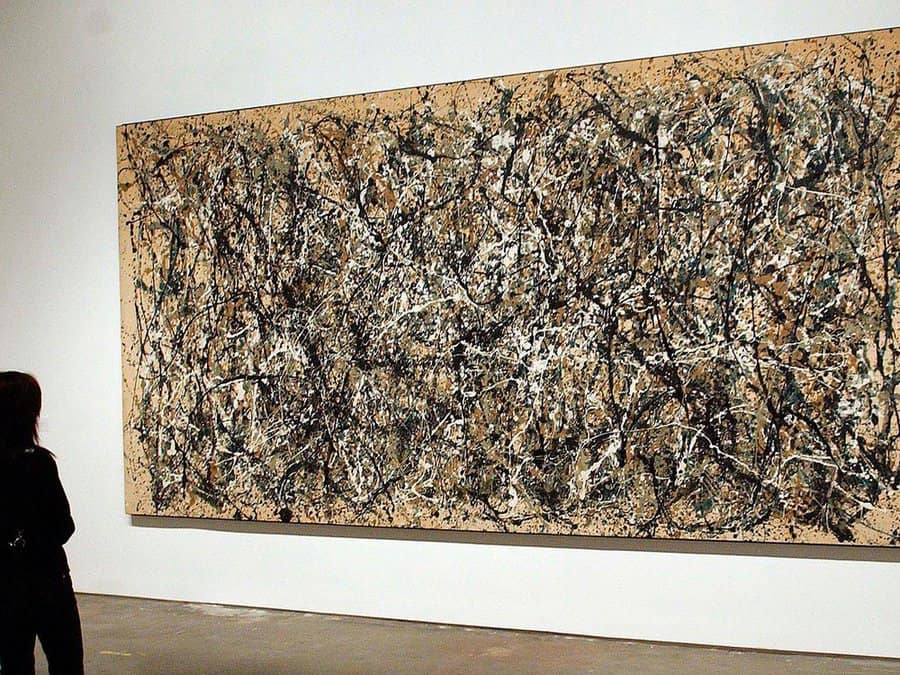
The more than you lot know the Autumn Rhythm (Number 30), the more imposing information technology gets. The imposing eye-communicable painting is waiting for us to reveal its meaning to be known.
Let's get to know its profound meaning first!
THE Pregnant OF AUTUMN RHYTHM (NUMBER xxx)
Autumn Rhythm (Number 30) indicates October, when it was created, and harmony with nature's endless mutability.
It draws y'all into its intricate trap of swirls and splashes with a sense of repeatedly moving without beginning or terminate. Jackson Pollock created this feeling by relinquishing all conscious control of his artwork. Pollock's primary contribution to modernism is this notion of abandoning personal power and premeditation to the artistic process or spontaneity.
Originally titled "Number 30", after "Fall Rhythm". Therefore the Met gave the two names to accordance, calling it "Autumn Rhythm (Number thirty)".
AUTUMN RHYTHM (NUMBER 30) Assay
Fall Rhythm is full of intriguing things that y'all could not avoid your eyes to it. The painting'south immense size and hyper-state captivate you lot. Nevertheless, intricate patterns, floating lines, and striking arcs let y'all fall into a bottomless pit.
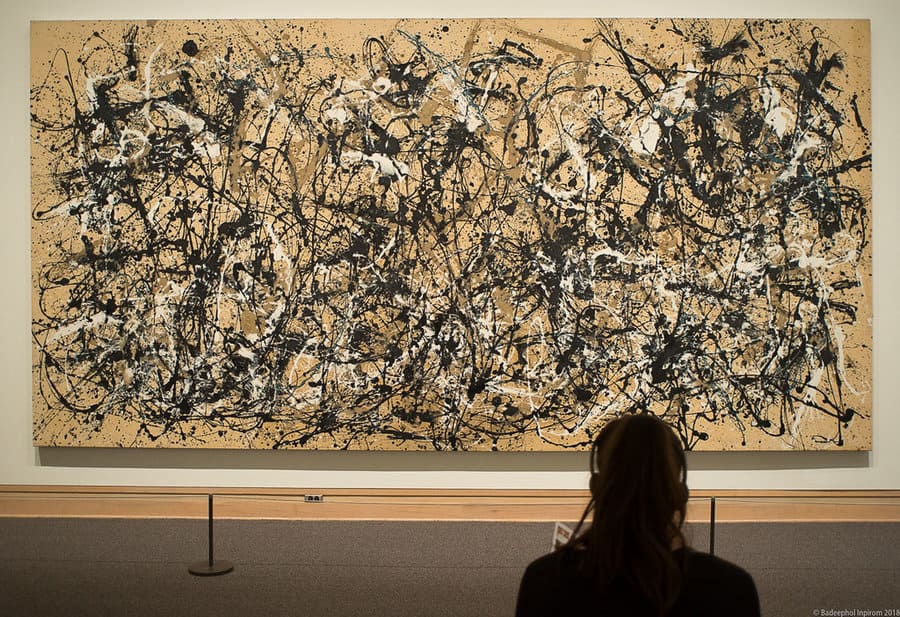
You attempt to make sense of what you lot can encounter by following the back and forward lines as they rising similar a way to cartel the gravity and fall like a drop from the sky. But before that, I want to give you lot Jackson Pollock's brief biography before diving into all the technicalities to grasp them better.
Jackson The Dripper
Jackson Pollock couldn't grasp the pencil to practise what he wanted. In fact, when all art students effectually him effortlessly whipped out drawing after drawing, Pollock couldn't even trace correctly.
He knew he had something to express in paint; all the same, he didn't know how to depict information technology. In fourth dimension, he would reveal how much talent he undoubtedly had, along the way inventing the kickoff truly American art movement, Abstruse Expressionism.
He appropriated an enormous space favorable for his big canvases for his studio. But the canvases demonstrated unwieldy, so Pollock chose to lay them on the floor. And so, oddly, the side by side step was entirely rational: He would baste pigment onto them from in a higher place.

Did Jackson Pollock Invent the Drip Painting?
A lot of tales appeared about how Pollock "invented" baste painting. They said that he accidentally thinned his paint too much, that he threw a brush in a fury, and much more than. Just the reality would be far away from information technology.
The truth is that he didn't invent anything. Other Modernists had dripped paint, besides as flicked, dropped, splashed, and thrown. What was unlike was not only the style Pollock covered the entire canvass with dripped pigment but also the mastery he performed in the detail technique.
Pollock had created his first "baste" painting in 1947, the production of a radical new approach to paint treatment. The artist heightens his powers with Fall Rhythm, fabricated in October 1950.
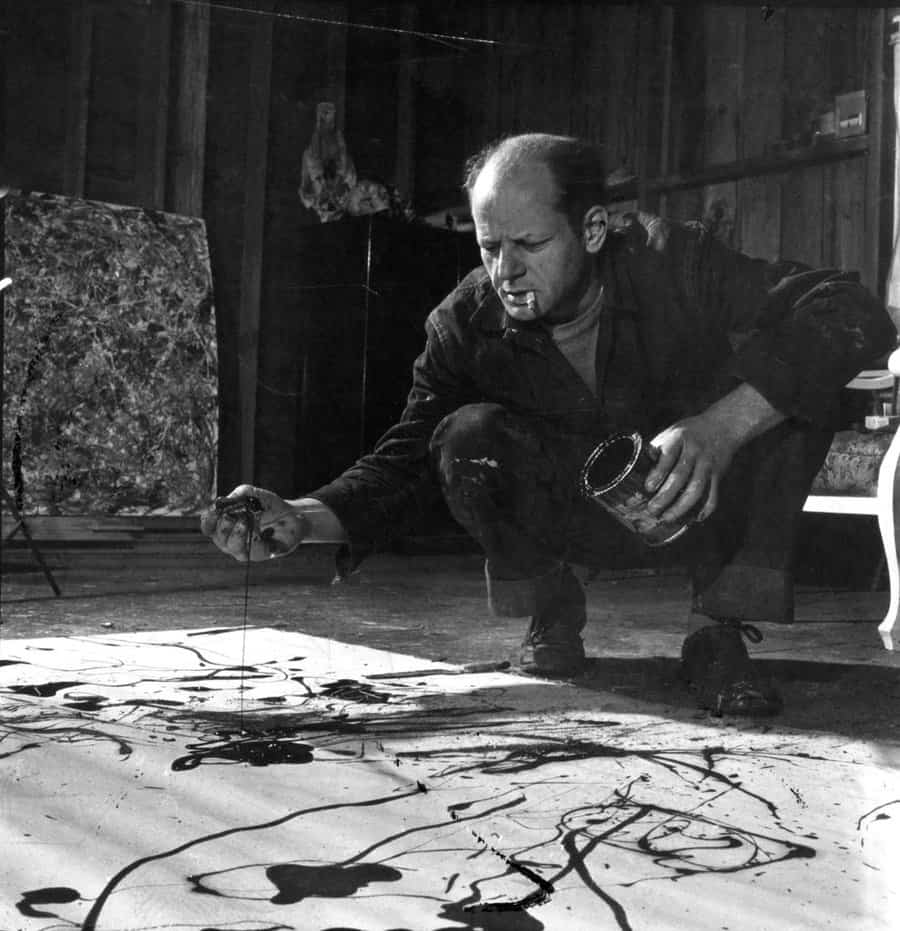
He developed such control that he could drib paint precisely where he wanted. Even though he had struggled with his artistic knack more than often than not, he couldn't draw besides couldn't even trace. He has such complete and utter control in Autumn Rhythm (Number xxx), which seems pretty astonishing and also enormously rewarding.
His success was short-lived, doomed from the start past his self-subversive demons, just for a few incredible years, Pollock shoved his triumph in the faces of all those who had doubted him. Just after all, he never did acquire how to draw.

Autumn Rhythm (Number xxx) Technique
The painting was not simply about what he painted but how he painted. He abased the easel in favor of his studio floor. First, Jackson Pollock laid out his big canvases. Then, he flicked pigment on them from the castor, dripped information technology from sticks, or threw it on directly from the pigment can. He performed his work in a random yet highly controlled manner.

His method was known every bit activity painting. He unrolled a large canvass on the floor of his studio so that he could constantly move around it while applying the pigment and working from all four sides to motion picture, pour or throw pigment where he wanted. He even stepped on the canvas when necessary. Therefore, there's no central point of focus, no hierarchy of elements in this all-over composition in which as of the surface is every bit significant.
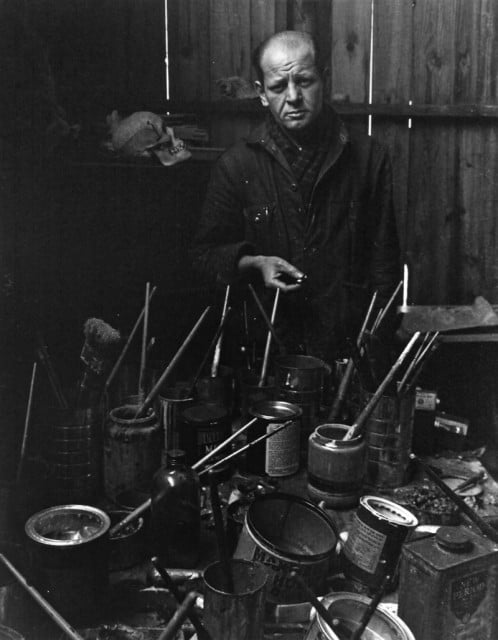
Fifty-fifty though Pollock did not need the brush, he often used i still, on an unprecedented scale. While he was performing Fall Rhythm, the bristles almost never touched his painting. Instead, he allow the paint drip off the tip, or another saying, he used the brush to picture show and fling pigment. Afterwards, he would slash and swirl the paint puddles with a stick. Moreover, instead of mixing colors on a palette, he mixed pigment on his sail.
Jackson Pollock also used sticks, trowels, knives – in brusk, anything but the traditional painter's implements to build up dense, lyrical compositions comprised of intricate skeins of line.

Jackson Pollock' Studio
Taken photos when Pollock was at work in his studio prove him moving around on his canvas, swinging his arms or flicking his wrist to throw the paint down to the sheet. This dynamic class of action painting and Pollock's full involvement formed the powerful lines and curves that distinguish his work.
Jackson Pollock'southward idiosyncratic working technic was oft defined equally ritualistic. His approach includes demanding physical activeness too dense mental attention.

What Can You See in Autumn Rhythm(Number thirty)?
In his Autumn Rhythm painting, Pollock seems to limit himself to four harmonious, earthly tones that evoke the fall landscape's fading color. Notwithstanding, at the aforementioned time, their vibrant application hints at solid breezes and swaying branches.
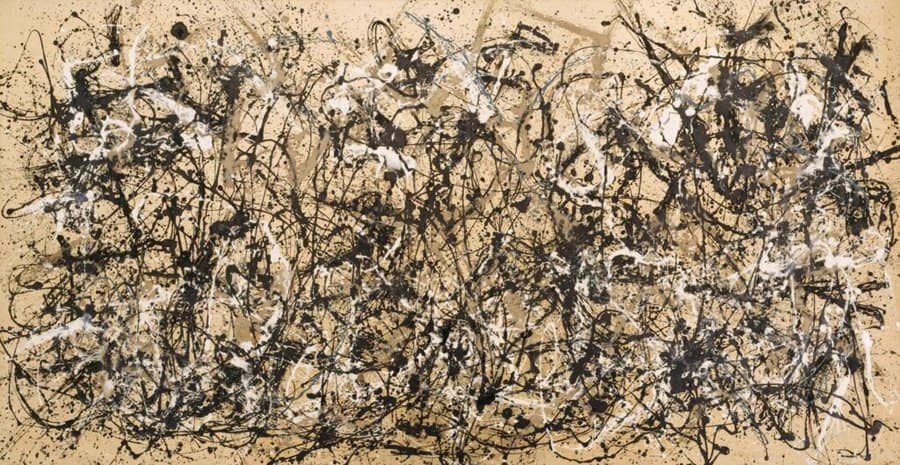
Pollock ignores focal points, edges, and other traditional limerick ideas in his abstruse works. Equally a result, you can look Autumn Rhythm would exist agitated chaotic. However, the truth is a bit different. It turns out its layers of color blend in a rhythmic fashion of intricate patterns, floating lines, and curves.
Automatism
Jackson Pollock was influenced by Surrealist Automatism, allowing the subconscious to guide the artist's mitt. When he started to paint Autumn Rhythm, he was without an image, and Pollock let it develop equally he worked. He even once said;
"When I am in my painting, I am non aware of what I am doing."
Jackson Pollock

In 1946, Pollock began to focus exclusively on the act of making a painting rather than worrying nigh its figurative or symbolic content. Spontaneity was a disquisitional chemical element. Just lack of premeditation should not exist confused with ceding control, as Pollock stated;
"I tin control the catamenia of pigment; there is no blow."
Jackson Pollock
Surrealist Automatism
While Surrealism is a revolution against a society ruled by rational thought, the Surrealists tapped into the "superior reality" of the subconscious; in psychology, "automatism" refers to involuntary deportment and processes, not under the control of the conscious mind such every bit dreaming, breathing, or a nervous tic.
Freud and other psychoanalysts used various techniques to bring to the surface the subconscious thoughts of their patients. Also, the Surrealists borrowed automatism techniques to boost their art, assertive that the creativity that came from deep within a person's hidden could be more powerful and genuine than any outcome of witting thought. Therefore we tin can define Automatism in art as one of the methods of Surrealism of creating art without witting idea.
Hither, in Autumn Rhythm, nosotros run into a high indicate in modern art, where the artist was stepping away from the representation of nature by looking into himself, his physical movements, and his emotional country.
Limited Palette
Pollock preferred enamel paint since it was more fluid. He only employed 4 colors in Fall Rhythm, every bit mentioned earlier.
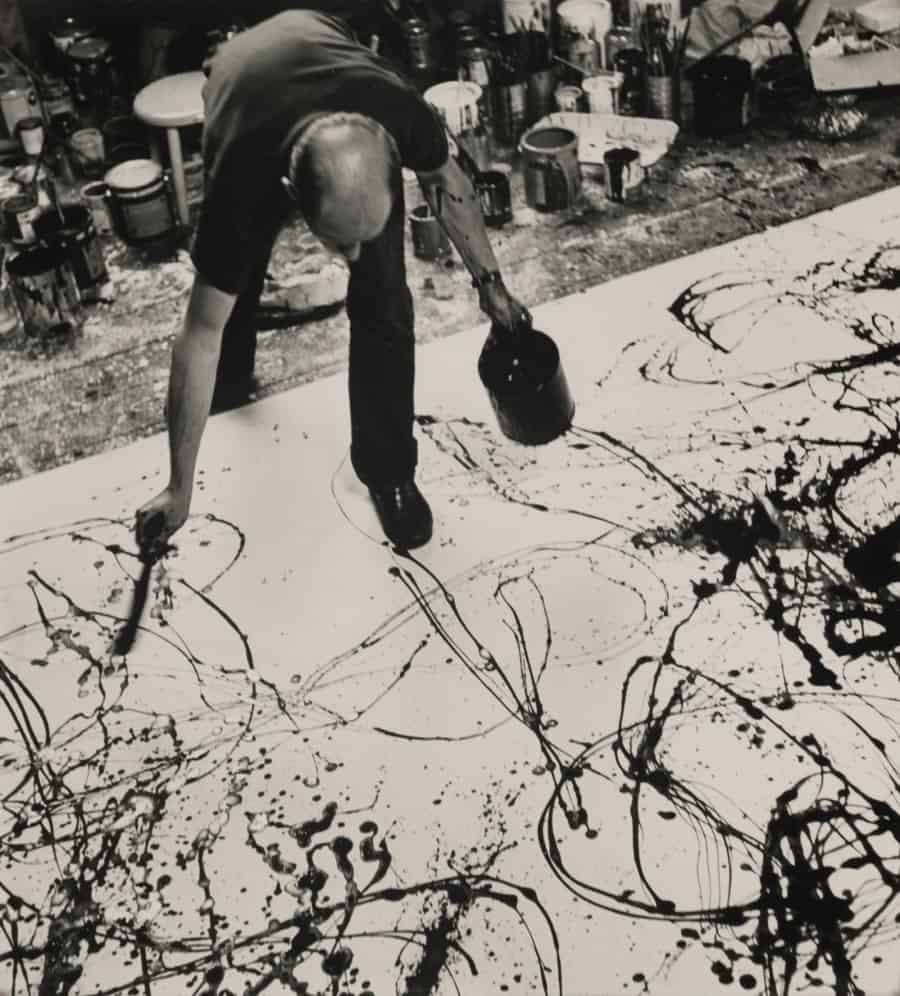
Pollock began by flicking thinned black paint onto the canvas. The color plunged in since the canvas was unprimed, and the weave stayed visible, adding texture to the painting. A circuitous network of white, brown, and bluish-grey rhythmic lines was built upwards over the black, making the black announced frontward.
Sense of Movement
The whirling tangle of lines, splashes, and drops look explosive. Pollock's vigorous, trip the light fantastic-like motions transformed into dynamic sweeps of seemingly haphazard marks-elegant lines of diluted blackness paint collide and intersect with broader white and dark-brown stripes, streaks, splatters. The whole canvas is full of movement; some marks upshot from chance, while others are not random just advisedly choreographed.
No Beginning or Stop
At that place is no focal bespeak in the limerick, and the center of the painting is no more of import than the edges. Pollock said that his painting had "No offset or end." His paintings are represented as all-over compositions. In other words, Autumn Rhythm's enormous size and has neither beginning nor end evoke the epic West American landscapes.
Long Rhythmical Trails of Paint
At that place are many means that you tin encounter in the painting. To namely, some areas are seen equally seeping into the fabric; dots look like splashes and some areas where the paint has pulled up and dried and cracked—moreover, shiny areas or sharp or linear.
There is a sort of rawness. For centuries, whenever an artist painted, not but did they prime number the canvas, but also the virtually often prepared the drawings past organizing the composition. And then there was real intentionality and consciousness. And here he is flipping that value on its head.
WHY IS AUTUMN RHYTHM (NUMBER thirty) SO Important?
Firstly, it'south ane of Jackson Pollock's best-known drip paintings. With Autumn Rhythm, Jackson Pollock revolutionized. It requires the witness' interaction. The piece of work is timeless since at that place was no indication, allowing viewers to relate willingly and not feel alienated. Nevertheless, it is an early and magnificent example of abstract expressionism.
THE ART Way OF AUTUMN RHYTHM (NUMBER xxx)
Autumn Rhythm (Number 30) is an abstract expressionist painting. Forth with artists Willem de Kooning and Mark Rothko, Jackson Pollock is credited with inventing Abstract Expressionism. Equally the offset art movement that originated in America, Abstruse Expressionism became the United States' primary contribution to modernism. In addition, information technology helped New York pocket from Paris the championship of the world'southward cultural uppercase. It'due south hard to imagine where Pollock would have gone with his art had he lived.
Abstract Expressionism
After World War Ii, it was as if American artists dropped a flop on German Expressionism, splattering the representative side and leaving simply the naked expression. In High german Expressionism, emotion distorted the face of reality ( the manner human faces are distorted by extreme feelings but are still recognizable). In Abstract Expressionism, emotion distorts the face of being beyond all recognition.
The purpose of Abstract Expressionism (1946-1950) is to probe the unconscious, to allow it to speak its own symbolic linguistic communication.
HOW TO PAINT LIKE JACKSON POLLOCK
When you lot confront Pollock's Autumn Rhythm, too as it engages you, you lot feel like you're beingness swallowed by it, and it lets you fall into a bottomless pit. Or should we call it the chaotic yet beautiful universe?
All was said by me, yet, the 1 more affair left to exist told by Jackson Pollock…
"When I say artist I mean the man who is edifice things—creating, molding the earth, whether it exist the plains of the west or the atomic number 26 ore of penn. Information technology's all a big game of construction —some with a castor—some with a shovel— some choose a pen."
Jackson Pollock
I have a few questions for you lot below.
What title would yous requite this painting?
How does this painting make you feel?
You lot can share your answers with us in the comments:)
Last but non least, if yous are into art, we will accept a blast seeing y'all hither. I promise every art-related thing will find you; see you in our following review. 😍✌
See Also:
Here is an essay that explains abstract expressionism: Abstract Expressionism
And here is a video past the Met, explaining Jackson Pollock's paintings:
The Met Museum Map

Source: https://artnsketch.com/autumn-rhythm-number-30-pollocks-the-most-notable-work/
Publicar un comentario for "Why Is Jacksons Pollocks Autumn Rhythm an Example of Nonrepresational Art"